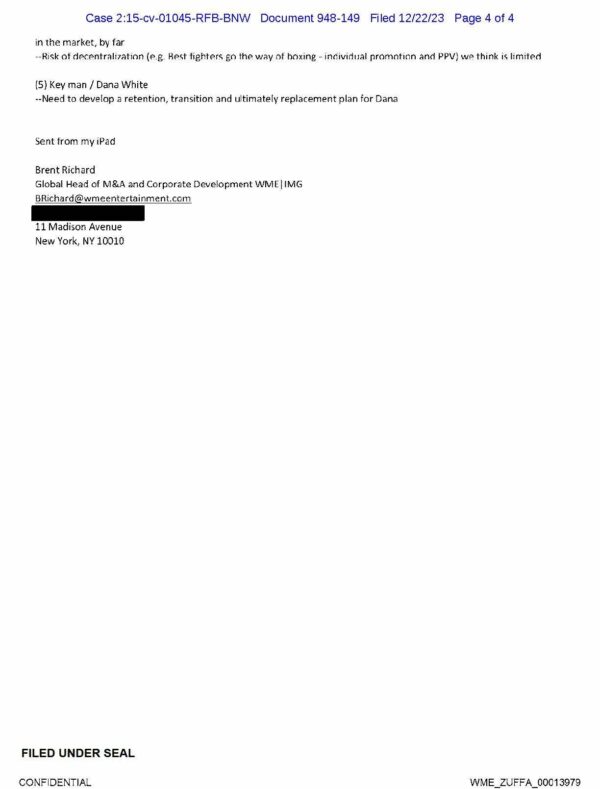
Dana White’s Future at UFC: A Critical Analysis Amidst Health and Competition Concerns
The UFC’s Road to WME Ownership: A Comprehensive Overview
In the high-stakes world of mixed martial arts, the UFC’s transition to WME ownership in 2016 marked a significant era. The intricate lender presentation that facilitated this buyout was a deep dive into UFC’s operational strategies and future aspirations. Key highlights included UFC’s commitment to athlete health and safety, showcased by collaborations with the U.S. Anti-Doping Agency, the Cleveland Clinic’s head trauma research, and the development of the UFC Performance Institute.
Dana White’s Continued Involvement: A Strategic Decision
Central to this transition was Dana White, the then-President of UFC. White’s decision to reinvest a substantial equity portion into the WME/IMG-led organization, later rebranded as Endeavor, and his agreement to stay on board until 2021, were pivotal. This move signaled stability and continuity for UFC under its new management.
Unveiling the Challenges: A Confidential Insight
The Blunt Reality: A WME Executive’s Perspective
However, a confidential email from Brent Richard, a WME executive, revealed in March 2016, four months before the sale, paints a more nuanced picture. This email, disclosed by a federal judge in the ongoing UFC anti-trust lawsuit, outlined key concerns, including CTE (Chronic Traumatic Encephalopathy) and White’s longevity as an executive.
CTE: A Growing Concern in MMA
The mention of CTE, a severe brain condition associated with repeated head traumas, was particularly striking. While no formal diagnosis had been made in a UFC fighter at that time, cases like Gary Goodridge and later Tim Hague, along with others like Renato Sobral and Spencer Fisher, have since brought this issue to the forefront. White, on his part, has historically promoted MMA as safer than boxing, a stance that has evolved but remains optimistic.
Competition and Fighter Pay: The Underlying Business Dynamics
Navigating Competitive Waters
Richard’s email also delved into the competitive landscape faced by UFC. He acknowledged the presence of “small operators” in MMA worldwide but emphasized UFC’s stronghold due to superior fighter contracts and revenue models. This dominance, however, is precisely what the fighters suing UFC in the antitrust lawsuit cite as evidence of anti-competitive practices aimed at suppressing fighter pay.
The Dana White Dilemma: Planning for the Future
Towards a Post-White Era
Lastly, the email touched upon a crucial aspect – the future without Dana White. Recognizing the need for a “retention, transition, and ultimately replacement plan for Dana,” it highlighted the importance of forward planning in leadership roles, especially in a dynamic and evolving industry like MMA.
Conclusion: Striking a Delicate Balance
Dana White’s role at UFC has been a blend of visionary leadership and navigating complex challenges. As the UFC continues to break revenue records and expand its empire, the balance between athlete welfare, competitive practices, and leadership transitions remains a delicate dance. With White signing a new seven-year deal in 2019, the future of UFC and its fighters, both in and out of the octagon, will continue to be a topic of intense interest and debate.
What will the post-White era of UFC look like, and how will it navigate the evolving landscape of athlete health and market competition?













